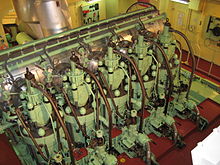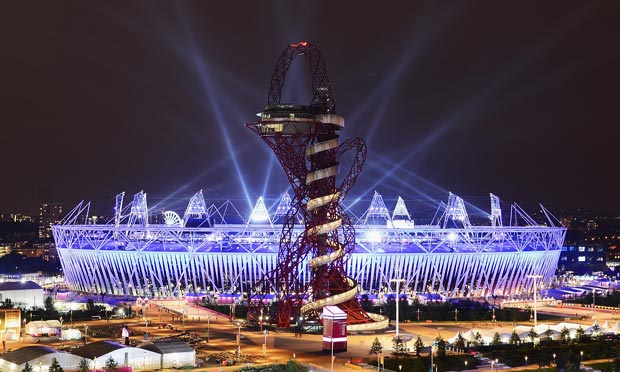******************************************************************
The origin of the term "Rohingya" is disputed. Some Rohingya historians like Khalilur Rahman contend that the term Rohingya is derived from Arabic word 'Rahma' meaning 'mercy'. They trace the term back to a ship wreck in the 8th century CE. According to them, after the Arab ship wrecked near Ramree Island, Arab traders were ordered to be executed by the Arakanese king. Then, they shouted in their language, 'Rahma'. Hence, these people were called 'Raham'.
Gradually it changed from Raham to Rhohang and finally to Rohingyas However, the claim was disputed by Jahiruddin Ahmed and Nazir Ahmed, former president and Secretary of Arakan Muslim Conference respectively. They argued that ship wreck Muslims are currently called 'Thambu Kya' Muslims, and currently reside along the Arakan sea shore. If the term Rohingya was indeed derived because of that group of Muslims, "Thambu Kyas" would have been the first group to be known as Rohingyas. According to them, Rohingyas were descendants of inhabitants of Ruha in Afghanistan. Another historian, MA Chowdhury argued that among the Muslim populations in Myanmar, the term 'Mrohaung' (Old Arakanese Kingdom) was corrupted to Rohang. And thus inhabitants of the region are called Rohingya.
Burmese historians like Khin Maung Saw have claimed that the term Rohingya has never appeared in history before 1950s.According to another historian, Dr. Maung Maung, there is no such word as Rohingya in 1824 census survey conducted by the British. Historian Aye Chan from Kanda University of International Studies noted that the term Rohingya was created by descendants of Bengalis in 1950s who migrated into Arakan during the Colonial Era. He further argued that the term cannot be found in any historical source in any language before 1950s. However, he stated that it does not mean Muslim communities have not existed in Arakan before 1824.
However, Arakan history expert Dr. Jacques P. Leider points out that the term Rooinga was in fact used in a late 18th century report published by the British Francis Buchanan-Hamilton. In his 1799 article “A Comparative Vocabulary of Some of the Languages Spoken in the Burma Empire,” Buchanan-Hamilton stated: "I shall now add three dialects, spoken in the Burma Empire, but evidently derived from the language of the Hindu nation. The first is that spoken by the Mohammedans, who have long settled in Arakan, and who call themselves Rooinga, or natives of Arakan."Leider also adds that the etymology of the word "does not say anything about politics." He adds that "You use this term for yourself as a political label to give yourself identity in the 20th century. Now how is this term used since the 1950s? It is clear that people who use it want to give this identity to the community that live there.
Early evidence of Bengali Muslim settlements in Arakan date back to the time of King Narameikhla (1430–1434) of Kingdom of Mrauk U. After 24 years of exile in Bengal, he regained control of the Arakanese throne in 1430 with military assistance from the Sultanate of Bengal. The Bengalis who came with him formed their own settlements in the region.Narameikhla ceded some territory to the Sultan of Bengal and recognized his sovereignty over the areas. In recognition of his kingdom's vassal status, the kings of Arakan received Islamic titles and used the use of Bengali Islamic coinage within the kingdom. Narameikhla minted his own coins with Burmese characters on one side and Persian characters on the other. Arakan's vassalage to Bengal was brief. After Sultan Jalaluddin Muhammad Shah's death in 1433, Narameikhla's successors repaid Bengal by occupying Ramu in 1437 and Chittagong in 1459. Arakan would hold Chittagong until 1666.
Even after gaining independence from the Sultans of Bengal, the Arakanese kings continued the custom of maintaining Muslim titles.The Buddhist kings compared themselves to Sultans and fashioned themselves after Mughal rulers. They also continued to employ Muslims in prestigious positions within the royal administration. The Bengali Muslim population increased in the 17th century, as they were employed in a variety of workforces in Arakan. Some of them worked as Bengali, Persian and Arabic scribes in the Arakanese courts, which, despite remaining mostly Buddhist, adopted Islamic fashions from the neighbouring Sultanate of Bengal.The Kamein/Kaman, who are regarded as one of the official ethnic groups of Burma, are descended from these Muslims.
Burmese conquest
British colonial rule
Following the Burmese conquest of Arakan in 1785, as many as 35,000 Arakanese people fled to the neighbouring Chittagong region of British Bengal in 1799 to avoid Burmese persecution and seek protection from British India. The Burmese rulers executed thousands of Arakanese men and deported a considerable portion of the Arakanese population to central Burma, leaving Arakan as a scarcely populated area by the time the British occupied it.According to an article on the "Burma Empire" published by the British Francis Buchanan-Hamilton in 1799, "the Mohammedans, who have long settled in Arakan," "call themselves Rooinga, or natives of Arakan."
Due to Arakan being scarcely populated by the time they occupied it, British policy encouraged Bengali inhabitants from adjacent regions to migrate into fertile valleys of Arakan as agriculturalists. The East India Company extended the Bengal administration to Arakan, thus there was no international boundary between Bengal and Arakan, and no restrictions on migration between the regions. In the early 19th century, thousands of Bengalis from the Chittagong region settled in Arakan seeking work opportunities.In addition, thousands of Rakhine people from Arakan also settled in Bengal.
The British census of 1891 reported 58,255 Muslims in Arakan. By 1911, the Muslim population had increased to 178,647.The waves of migration were primarily due to the requirement of cheap labor from British India to work in the paddy fields. Immigrants from Bengal, mainly from the Chittagong region, "moved en masse into western townships of Arakan". To be sure, Indian immigration to Burma was a nationwide phenomenon, not just restricted to Arakan. Historian Thant Myint-U writes: "At the beginning of the 20th century, Indians were arriving in Burma at the rate of no less than a quarter million per year. The numbers rose steadily until the peak year of 1927, immigration reached 480,000 people, with Rangoon exceeding New York City as the greatest immigration port in the world. This was out of a total population of only 13 million; it was equivalent to the United Kingdom today taking 2 million people a year." By then, in most of the largest cities in Burma, Rangoon (Yangon), Akyab (Sittwe), Bassein (Pathein), Moulmein, the Indian immigrants formed a majority of the population. The Burmese under the British rule felt helpless, and reacted with a "racism that combined feelings of superiority and fear."
The immigration's impact was particularly acute in Arakan, one of less populated regions. In 1939, the British authorities, who were wary of the long term animosity between theRakhine Buddhists and the Rohingya Muslims, formed a special Investigation Commission led by James Ester and Tin Tut to study the issue of Muslim immigration into the Rakhine state. The commission recommended securing the border; however, with the onset of World War II, the British retreated from Arakan.
**************************************************************************







